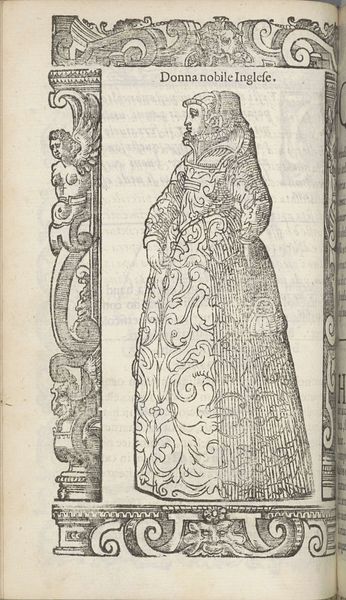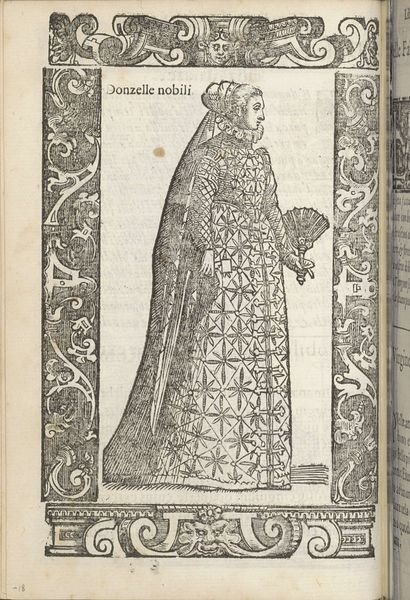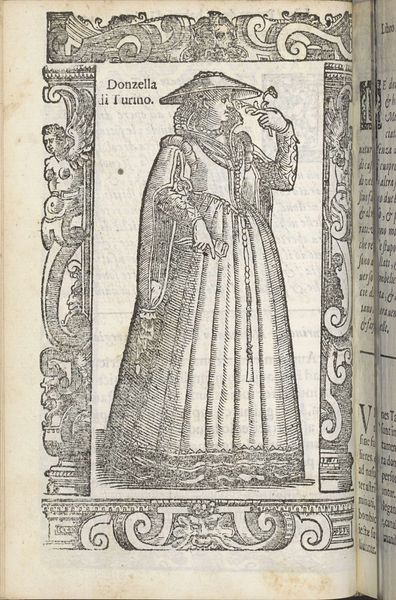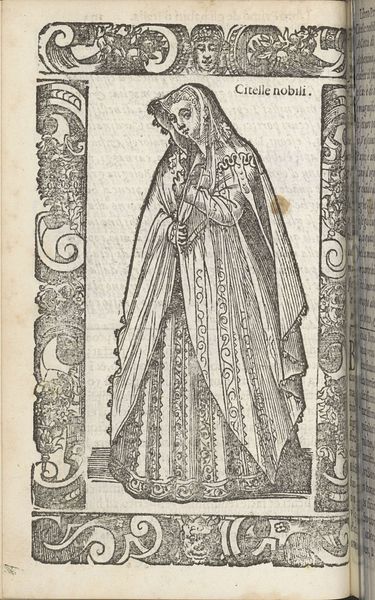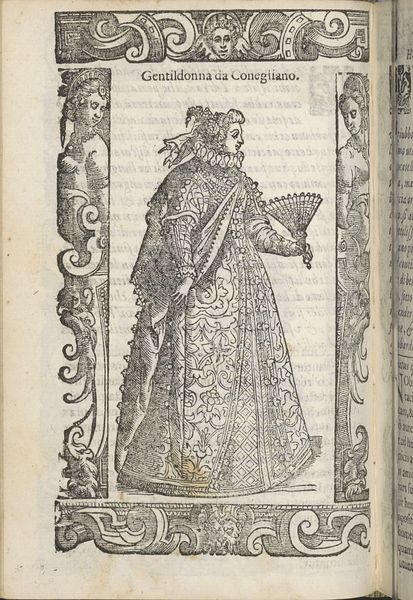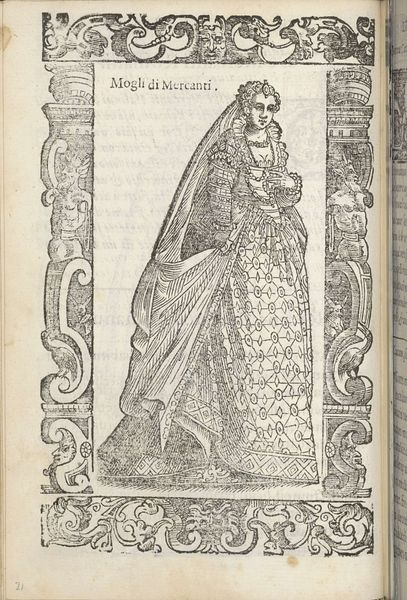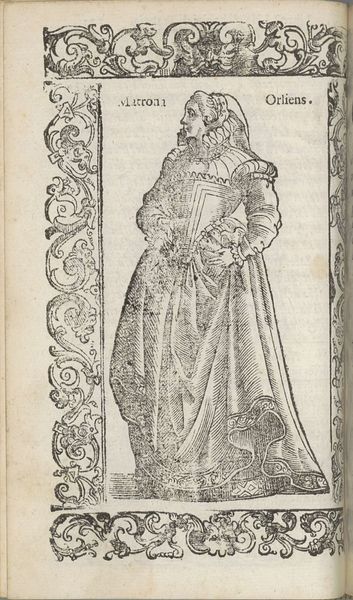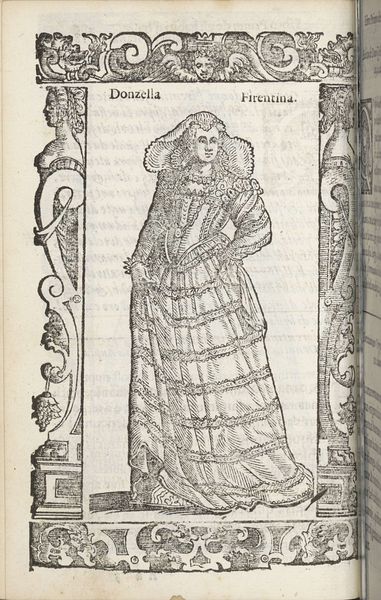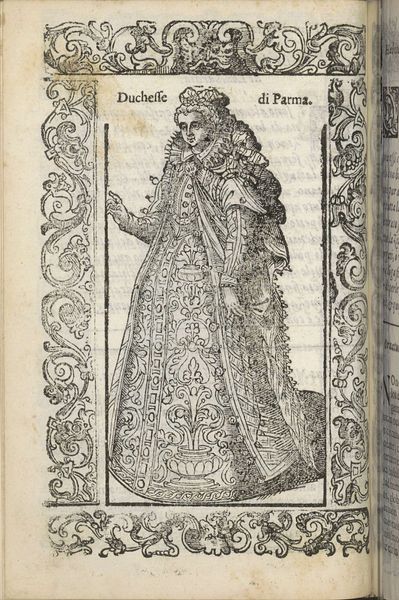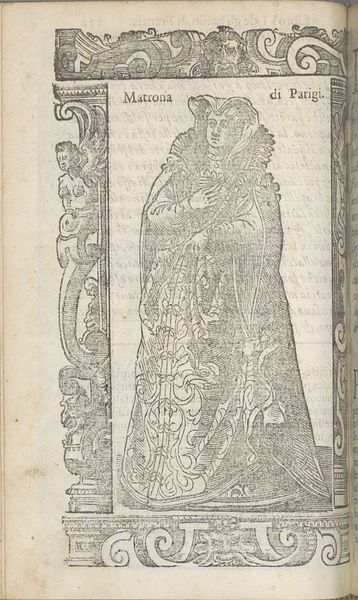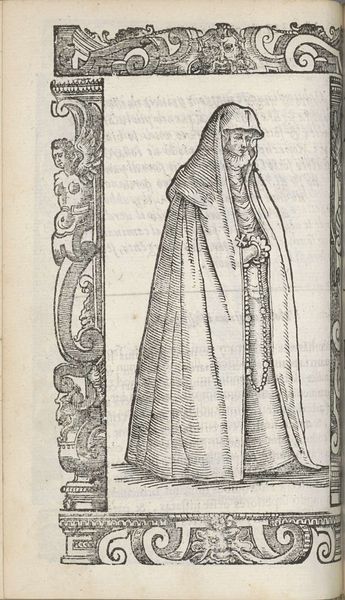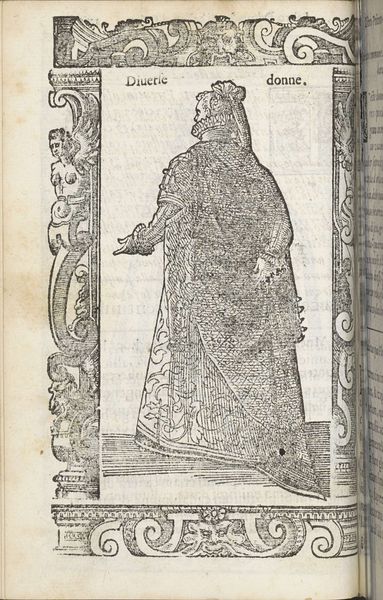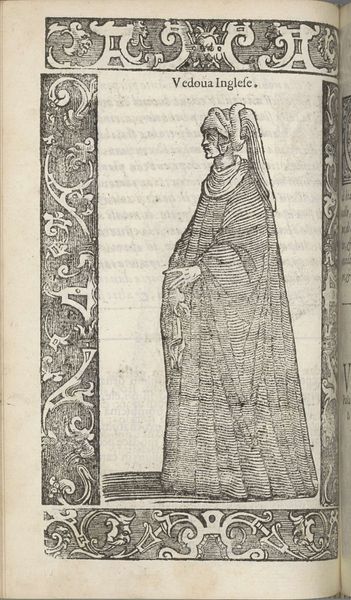
drawing, paper, ink
#
portrait
#
drawing
#
pen sketch
#
pencil sketch
#
mannerism
#
figuration
#
paper
#
ink
#
italian-renaissance
#
dress
Dimensions: height 167 mm, width 125 mm
Copyright: Rijks Museum: Open Domain
Editor: So, this is a pen and ink drawing titled "Getrouwde adellijke dame uit het koninkrijk Napels," or "Married noble lady from the kingdom of Naples," made in 1598 by Christoph Krieger. I'm immediately struck by how ornate her dress is, almost like a pattern on a wallpaper, and I'm curious about what all the details might signify. How do you interpret this work, especially the symbolism embedded in her attire? Curator: What I notice first is the complex relationship between identity and status projected through clothing. The ruff, the gown's floral motif, the overall cut—it all speaks to a highly codified visual language. Notice the "Matrona moderna" inscription above the portrait itself; that, paired with the dress, becomes an explicit and almost theatrical announcement of her status within Neapolitan society. Do you see the object in her hand? What does that tell you? Editor: It looks like a small bouquet or maybe a pomander? I hadn't thought much about it beyond just being a decorative element. Curator: Precisely. These elements often functioned as symbols of virtue, wealth, and even protection against illness. They tell us about the layers of meaning attributed to the body itself. Moreover, consider how the Mannerist style, with its emphasis on elegance and artifice, contributes to the overall message. Every line, every detail is a constructed representation, a performance of nobility. It is no simple portrait. Editor: It’s fascinating to consider the performative aspect of the clothing in this era, almost like wearing a flag to showcase your identity. Thank you, this work has many interesting stories to tell! Curator: Absolutely. Understanding these visual symbols unlocks a richer understanding of the historical context and the cultural values of the time. It changes the way you "see" the portrait.
Comments
No comments
Be the first to comment and join the conversation on the ultimate creative platform.
